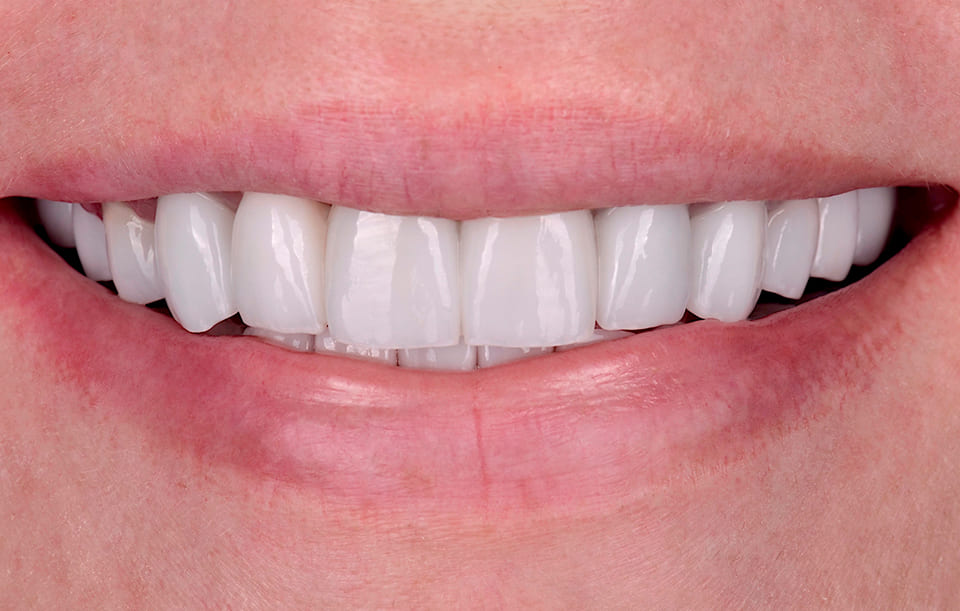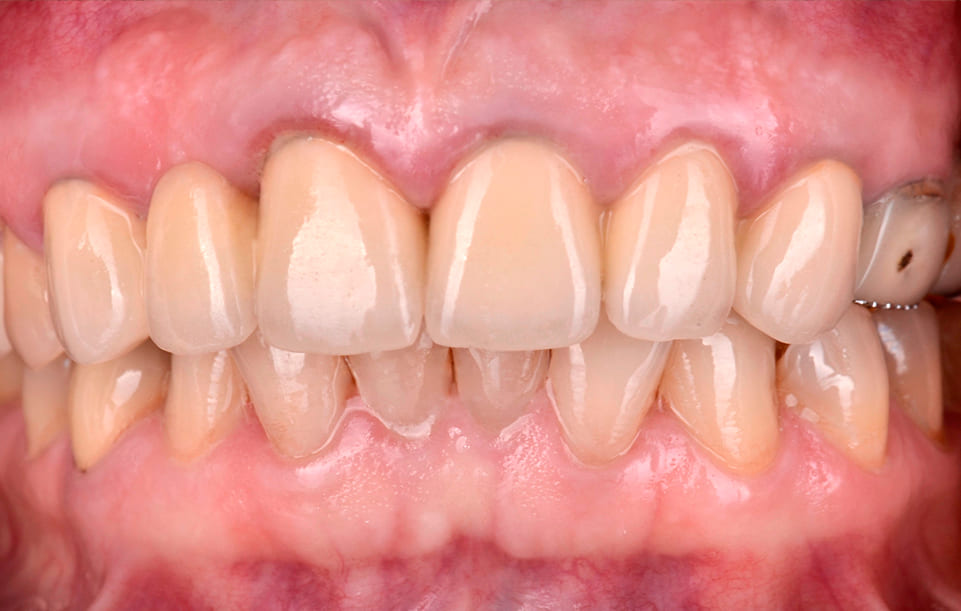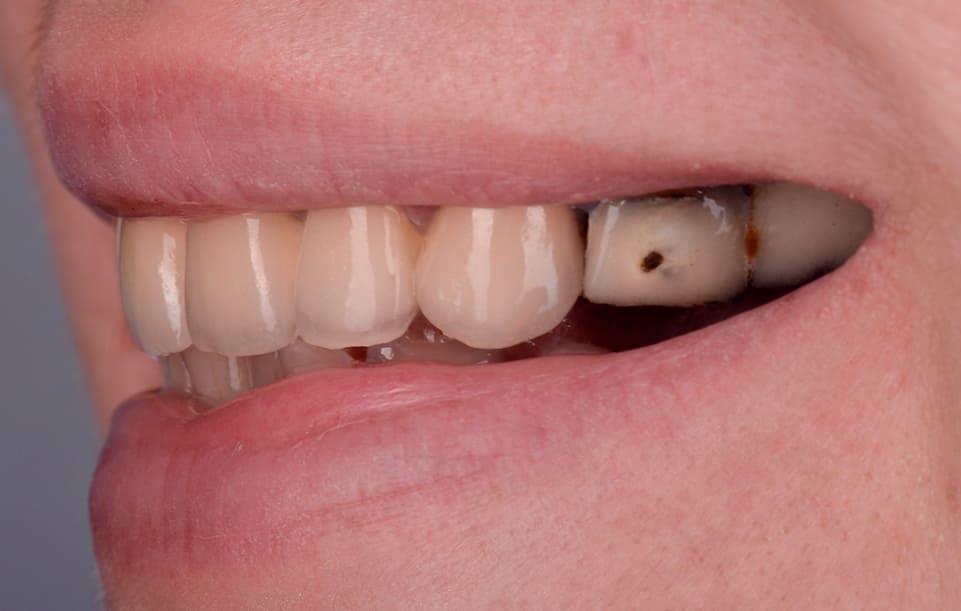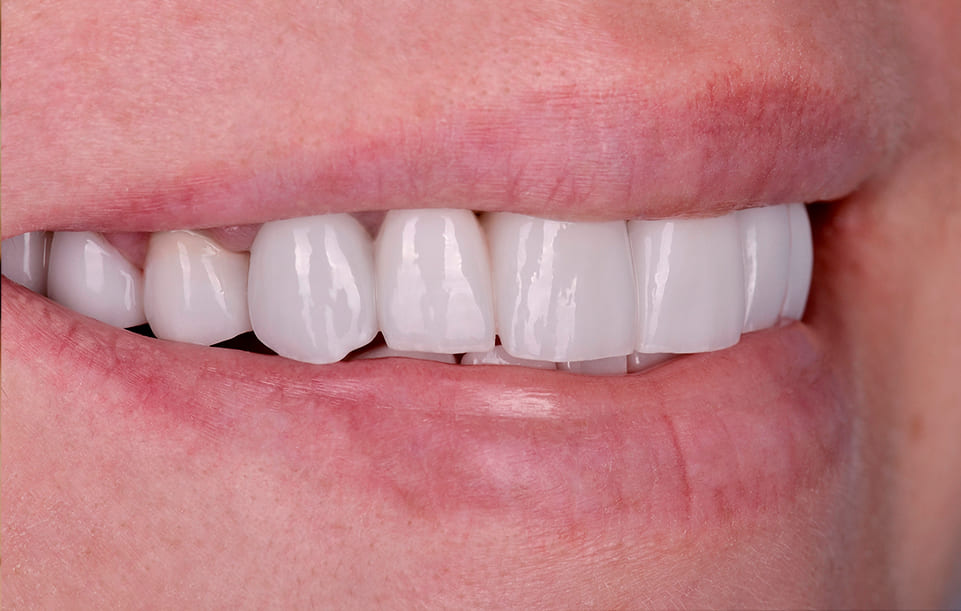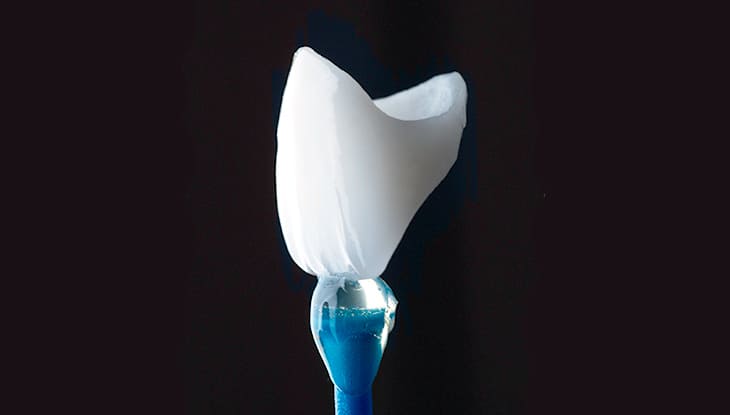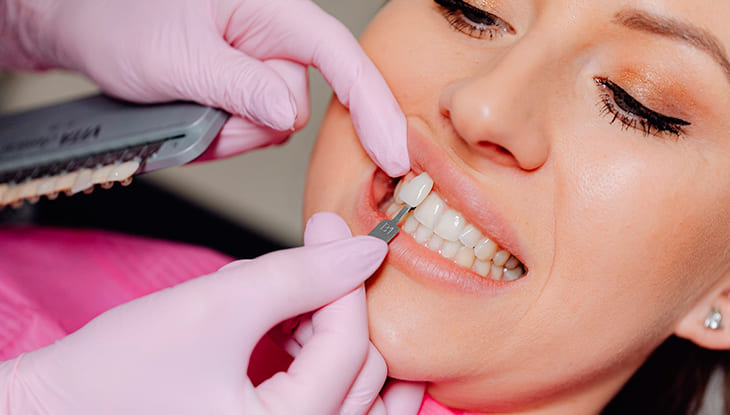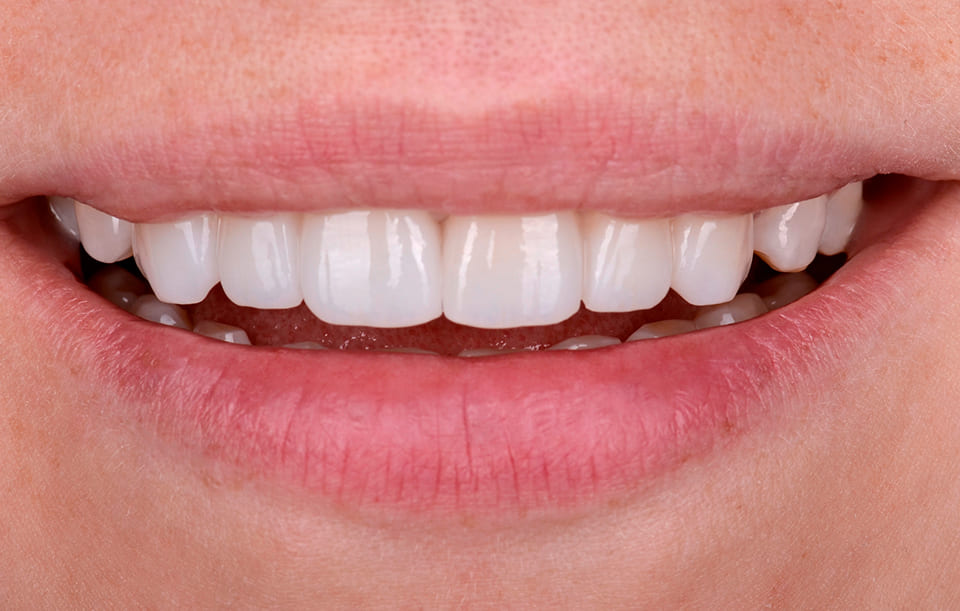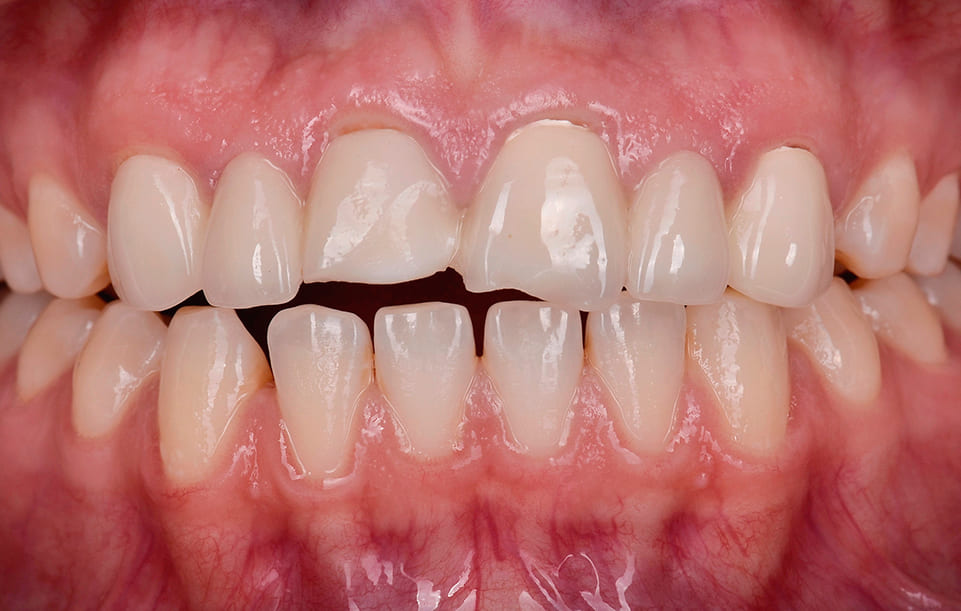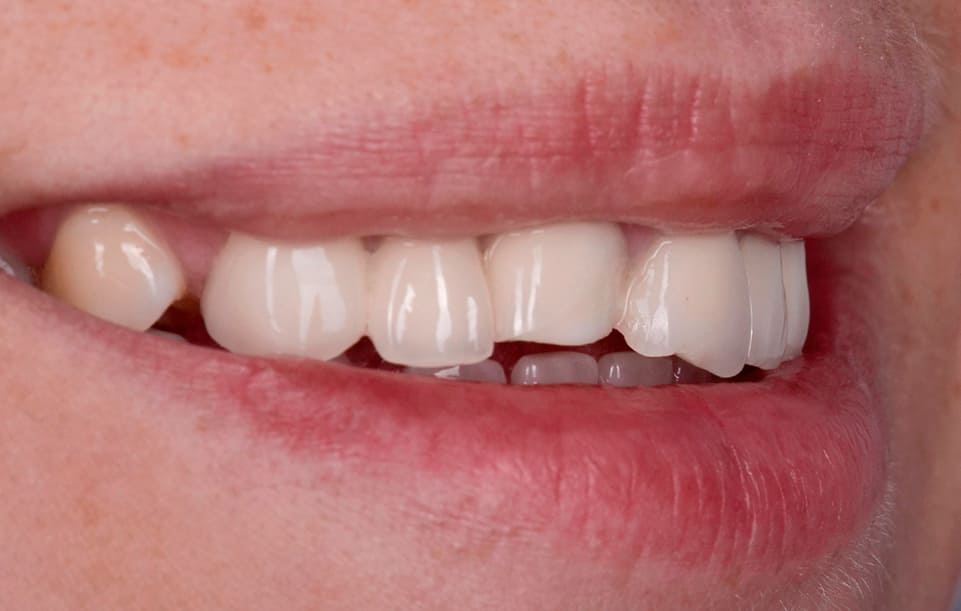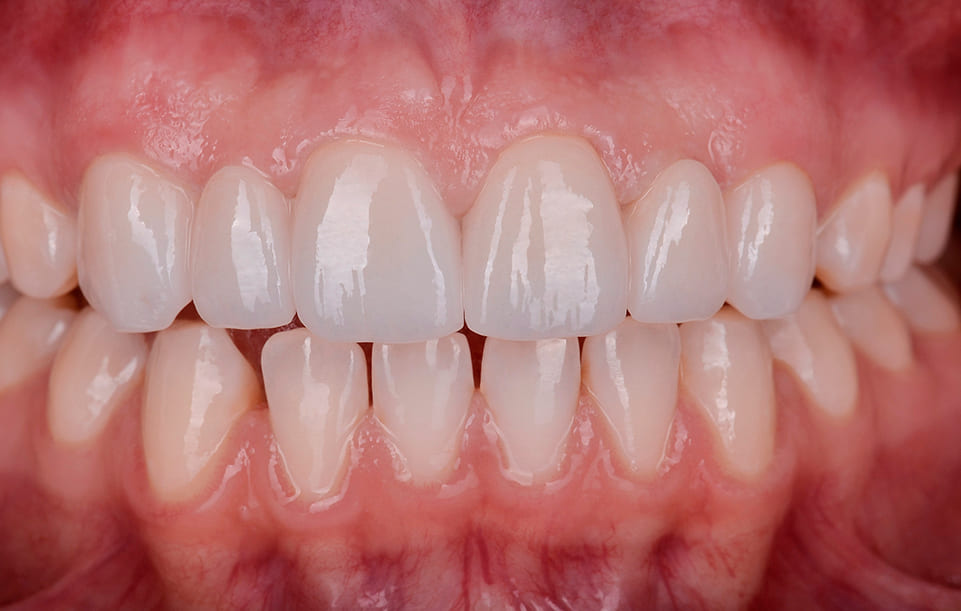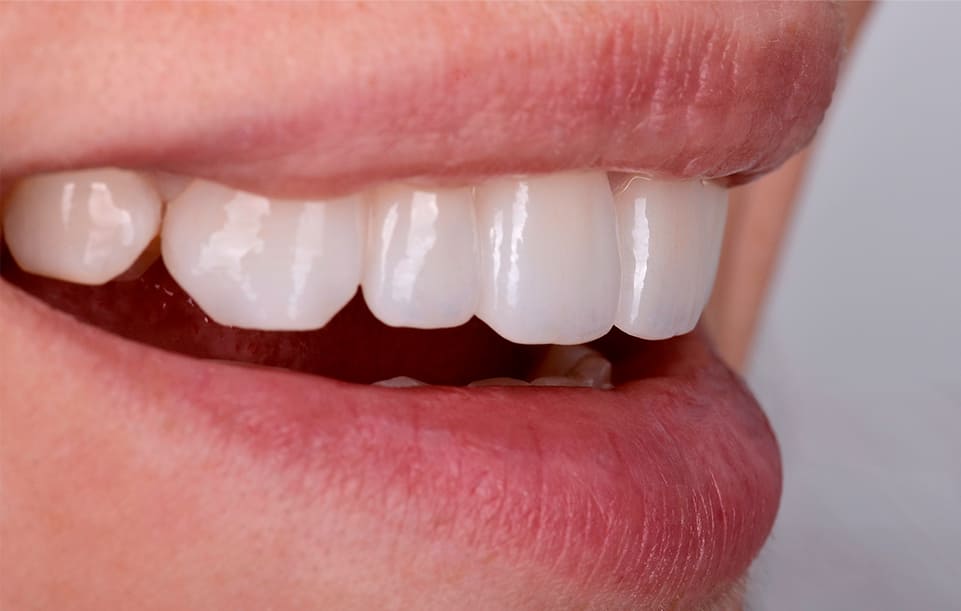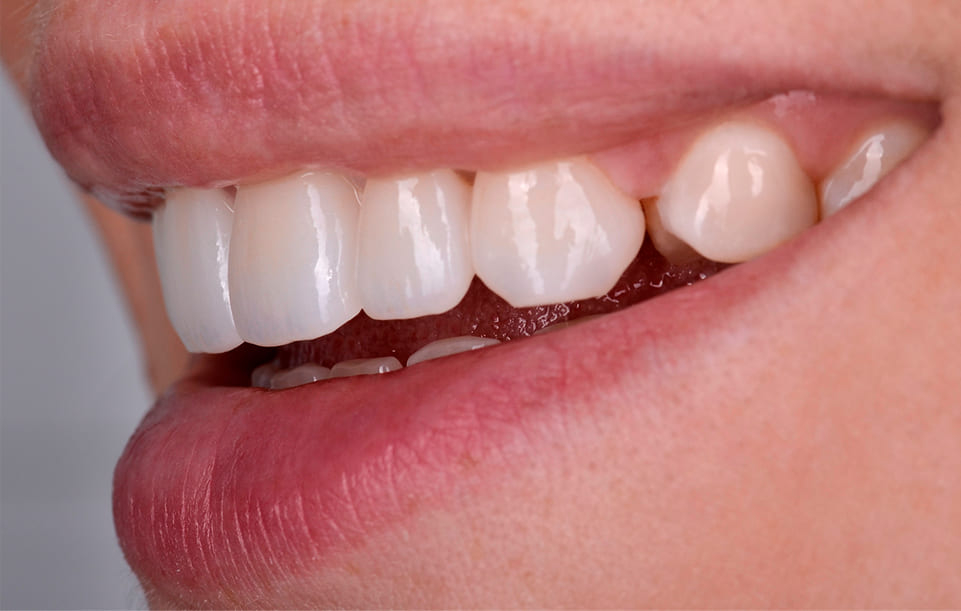Dental prosthetics
WHAT ARE DENTAL PROSTHETICS?
The primary purpose of non-removable prosthetics is to solve a wide range of problems associated with entirely or partially missing teeth in the upper or lower jaw. This method allows restoring the shape and aesthetics of teeth, compensating for missing teeth. The placement of artificial dental structures is required in case a person has the following dental problems:
• increased attrition of enamel;• diastemas, cracks, chips;
• a dental crown is missing, and there is no other way to restore it;
• one or more missing teeth, as well as edentulism.
Inlays
Veneers
Veneers look like thin plates. This type of prosthesis is used to restore the aesthetic appearance of a smile. The famous Hollywood smile is achieved with the help of veneers. Hypoallergenic materials (composite, ceramics, zirconium dioxide) are used for veneer manufacture.
Veneers and their other type, lumineers, do not treat but radically mask such dental defects as a trema, diastema, cracks, chips, staining, and discoloration of tooth enamel. Veneers are a complete alternative to teeth whitening and can also replace braces.
After placing veneers or lumineers, it is necessary to follow particular service rules since chewing coarse food, and frequent coffee drinking and smoking can damage them. The smile zone with veneers or lumineers has no flaws in terms of both shape and color.
Crowns
WHAT ARE COMPLETE DENTURES, REMOVABLE PARTIAL DENTURES, AND BRIDGES?
All removable dentures consist of a pink plastic base on which plastic, composite or ceramic teeth are fixed.
The type of manufacturing material classifies the following options for removable dentures:
Nylon. Such material is completely biocompatible and suggests maximum aesthetics.
Plastic. This type of removable denture can be manufactured from the following materials: acrylic, Spofadent, IvoBase, Vertex, and Deflex.
With metal fasteners (clasp).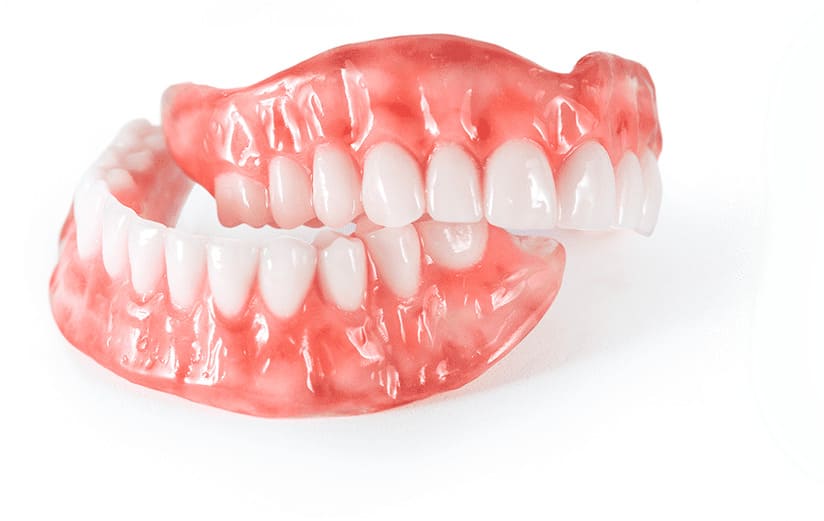
HOW REMOVABLE DENTURES ARE ATTACHED
Several factors influence the way the removable dentures are fixed. Such factors include:- degree of mobility, size, and position of the tongue in the oral cavity;
- some anatomical features of the prosthetic bed, palate, and alveolar ridge;
- lack of dental precontact.
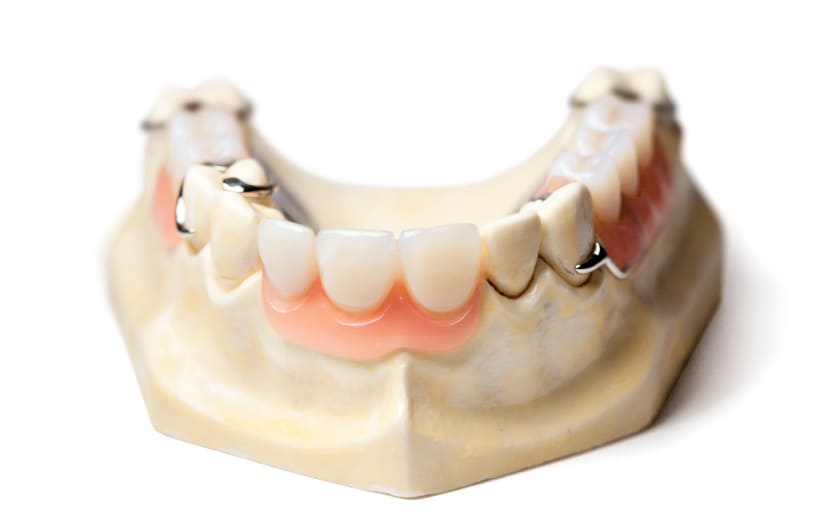
Attachments or locks. This fixation method is not often used when installing removable dentures, but it is often used when installing fixed structures. Attachments can be used for partial edentulism when there are no more than two teeth in the patient’s mouth. The patrix or fitting part of the attachment can be located in the root or crown part of the abutment tooth.
Clasps and hooks. ТThis type of fitting is used mainly for removable prosthetics, and the fixing devices and the dentures are made of similar material. Acrylic, polyurethane, and nylon dentures have fixation devices, while removable clasp dentures are equipped with metal hooks.Suction cup or flexible dentures. This method of attachment is used when installing a complete denture or overdenture. The attachment mechanism of such devices is based on the adhesion or natural vacuum effect of suction.
Implants. Removable implant-retained dentures can be fixed by a bar or ball attachment.Benefits of complete dentures:
Fast manufacturing.
Feasible for almost every patient.
Suitable in case of poor oral hygiene.
Disadvantages of complete dentures:
The denture in the upper jaw blocks the palate, which can result in a partial loss of the taste sense and sometimes a feeling of nausea.
A complete removable denture is fixed only with glue; it is not particularly stable and can move during chewing; this can negatively affect speech and mastication.
It should be brushed after every meal.
For the reasons stated above, we mainly use them as temporary solution.
Removable partial dentures are used when the spaces between the remaining teeth are so large that they can no longer be covered with one or more bridges.
Bridges are made when there are two abutment teeth and a maximum of two adjacent teeth missing. Bridges are much more comfortable than removable dentures. They are fixed on the abutment teeth and have a long service life.
The indication for the dental bridges is the absence of no more than two teeth in a row. The bridges are popular due to their relatively low cost and availability.
Such structures are fixed on the adjacent abutment teeth, while the area of fixation withstands double masticatory load. This can eventually lead to the rapid destruction of the supporting dental units.
Different types of dentures can be used depending on the size of the gap or attachment options, namely:
• one-piece bugel prostheses;
• telescopic prostheses;
• implant-supported prostheses.

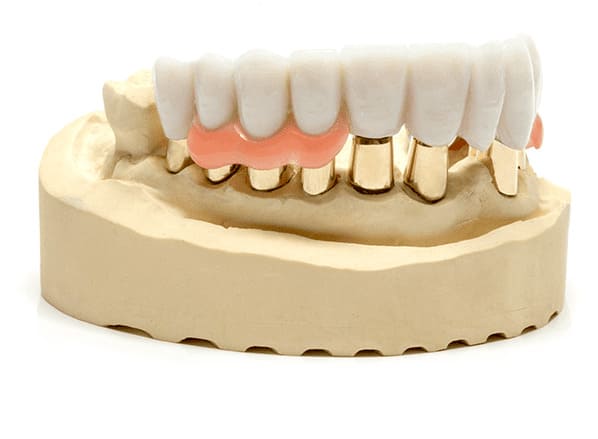
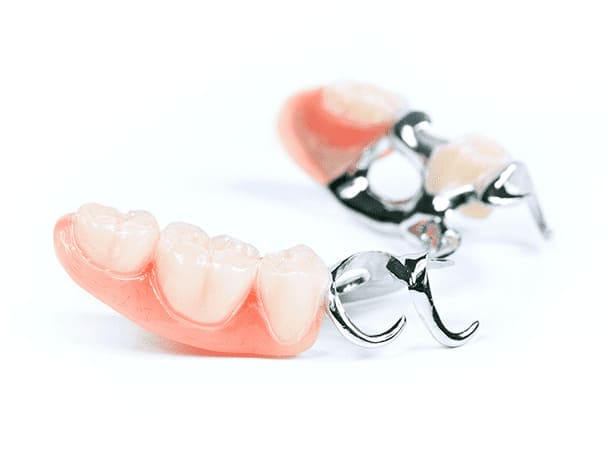
Implant-supported prostheses are used when there are few or no natural teeth left. Dental implants are artificial tooth roots that are implanted into the jawbone. Depending on the condition, a crown, bridge, or prosthesis can be attached to the implant.
This prosthetics option can be applied in case of partial and complete edentulism. The implant-supported prosthetics technique is based on introducing artificial roots into the jawbone, after which crowns are placed on the artificial roots. Fixed implant-supported prostheses are the radical and most effective way to restore dentition and chewing function and eliminate facial asymmetry resulting from tooth loss.
